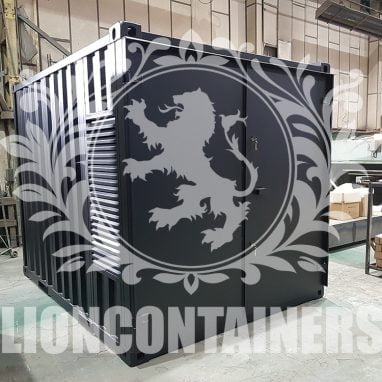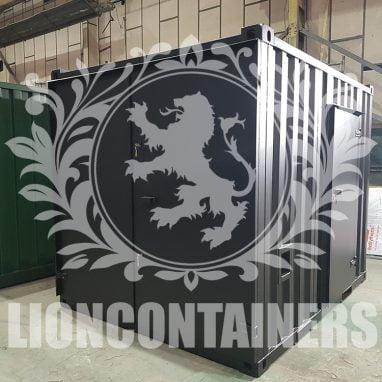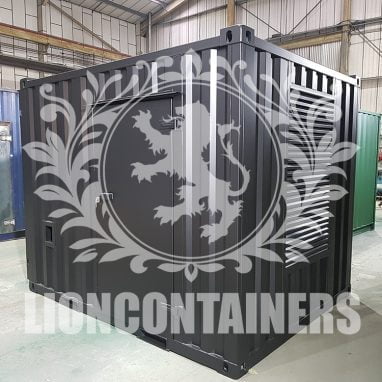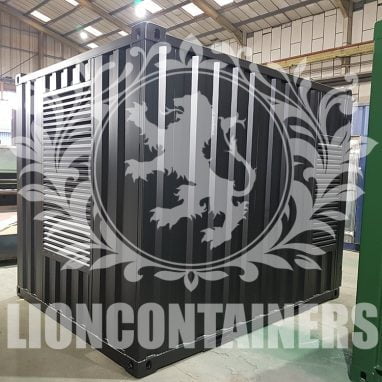Birmingham
Container Case Study
As always, we present our clients with a range of options matching their budget with the required specifications. The best way to do this is to check our stock list for equipment that may already be suitable for our clients’ needs. In this instance, we had a 20’ used generator housing unit at one of our depots and, fortunately, we also had a fully designed custom-built unit that met our client’s specifications exactly. Photos were provided of both the used generator housing and the custom-built units, along with a detailed quotation for both options.
Despite the attractive price of the used unit, our custom-built housing at 10’ x 8’ was manufactured to suit the fuel tank perfectly, and our client confirmed that they wanted to proceed with an order for the custom-built option. Our specification included manufacturing a 10’ x 8’ steel container with a corrugated side profile for additional strength, and heavy-duty shipping container-style corner castings to all 8 corners for ease of lifting. The corner castings also allow two units to be easily stacked on one another. We also incorporated forklift pockets to give our client flexibility in moving their housing around on location. The housing was to have flat-panelled double cargo doors in addition to a single-access personnel door to one side. Full-height louvre vents were installed in two sides of the container with a cable transit component.
We also accounted for manufacturing a fully-welded tray onto the base of the container where the fuel tank would sit to ensure any fuel spillages that might occur would be captured. The fuel tank itself was manufactured to fit snugly into the base tray of the container, and was also fully welded with internal structural support, as our client’s generators would sit directly on top of the fuel tank. Inside the fuel tank there were two ‘fuel baffles’ designed to limit the fuel’s movement when moving the complete unit around. When both the housing and fuel tank were manufactured, we arranged a site visit with our client allowing them to approve the design before the units were to be painted. This is offered to all our clients, as it allows any manufacturing rectification work or additions to be completed without affecting the paint work.
Case Study
Summary
During this meeting, additional features were discussed, including a fuel gauge, fuel filler cap, overflow-and-fuel return pipework, and over-expansion valve. After a successful meeting, all additional manufacturing work was completed before the unit was prepped for paint work. The fuel tank and housing were painted black (RAL9005). The housing was then internally lined with an acoustic insulation, covered by a galvanised perforated sheet. The insulation utilised in these units is designed to better absorb sound than typical insulation, and the perforations in the galvanised sheet allow the sound to penetrate through to the insulation. This is an important step, as generators are typically noisy, oftentimes disturbing neighbours to the construction works – especially when these generator engines are running all day! Having built many of these units for others within our client’s industry, this is a tried and tested product that never fails to exceed expectations.




Project
Vitals
Location
Birmingham
Container Size (Sq Ft)
80
Duration (days)
28
Containers Used
1
Ready To Start Your Container Project?
We can help bring your idea to life, just fill in our form and a member of team will be in touch.